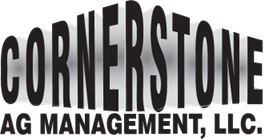Are you focusing on these cow comfort essentials?
Cow comfort is foundational to dairy productivity. A recent article from AG Proud emphasizes key areas that directly impact cow well-being: ventilation, cooling systems, stall bedding, feed and water facilities, bedding, and lighting. By focusing on these essentials, farms can enhance cow health, increase milk production, and improve overall efficiency.
Proper ventilation and cooling systems help maintain optimal barn temperatures, reducing heat stress. Comfortable bedding encourages cows to rest more, which is vital for milk yield. Adequate lighting supports natural behaviors and can influence reproductive cycles. Ensuring easy access to feed and clean water promotes consistent intake, supporting digestion and overall health.
Implementing these cow comfort strategies benefits the animals and contributes to the farm’s profitability.
Read the full article on Progressive Dairy.
For personalized advice on enhancing cow comfort in your operation, contact Cornerstone Ag Management. We’re dedicated to supporting your farm’s success.












